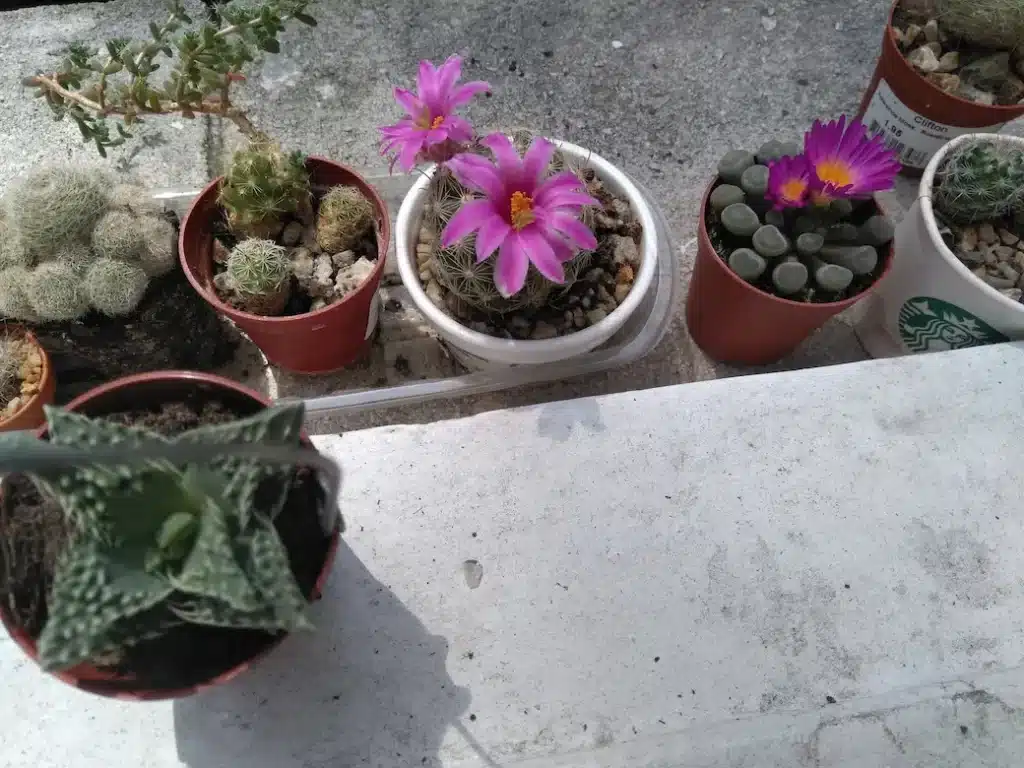Best Temperature for Succulents
Succulents enjoy warm temperature
Most succulents enjoy warm summer temperatures regardless of location. The summer is the easy part since the plants pretty much take care of themselves. The winter, however, is when it gets tricky. It is very rare that a succulent of any kind shows any sign of fatigue due to hot temperatures. This is what they are made for. On occasion, a shade succulent may show signs of discomfort if placed directly in the sun, where the leaves may start to hang and look sad.
Cold hardy succulents
The majority of plants can’t survive temperatures below the freezing point and must be kept comfortably above it. There is plenty of space for creative freedom with this part. And I am sure there are lots of solutions to create cool winter conditions at home. Some cacti are extremely cold hardy and tolerates extremely low temperatures. They can stay outside during winter as long as they are kept completely dry.
Extremely cold hardy succulents
Certain Chollas and Opuntias are dormant well below freezing point for several months during the winter, but seem very happy the following spring. They shrink and wrinkle like a raisin and appear completely lifeless. But once the spring sun starts to get warmer, the plants will wake up and resume life like nothing happened. The leaves will once again fill up with fluids and quickly recover it’s normal look. A new growth season is on its way and it is time to start watering.
Hardiness zones - to understand plants climate needs
The whole continent of North America is divided into 13 hardiness zones which indicate what type of temperature a plant prefers and requires to live outside all year long. Where zone 1 is located in the very north and is the coldest zone, while zone 13 is located at the very south.
- Check out the Hardiness Zone for North America
and
- Check out the Hardiness Zone for Europe

Winter growing and summer growing succulents
Succulents who live in very specific and extreme climated have developed an ability to survive and conserve energy during the very hottest or coldest months. Lots of plants in southern Africa must endure summers with extremely warm temperatures and prolonged drought. These plants have developed a life-cycle where they go dormant during the summer and start the growth season during the fall, and vice versa.
Summer growers are generally very easy to care fore since the adjust to indoor temperature and climate very easily. Altough, winter growers are much harder to care for during the winter since they require cool temperature during the winter, which is colder than what us humans prefer, along with very strong light.
If you have a winter growing succulent at home. It may do fine for a season, but will instinctively revert to its natural habits and go summer dormant and start growth during the fall.
What climate conditions can’t be replicated at home?
Some rare succulents and cacti have their natural habitat on very high altitudes on mountain slopes. Typically, this means very hot days and very cold nights. A climate that is extremely hard, if not impossible to recreate at home.
Cold protect your plant during purchase
Be careful during winter and cold temperatures as you transfer the plant from the plant store to your car. Since, temperature below the freezing point, even just a couple of minutes may damage the plant. Therefore, carefully protect the plant by wrapping it in a newspaper or other protective material until you arrive home to safe room temperature. The plant shop usually offers a solution for cold protection.
